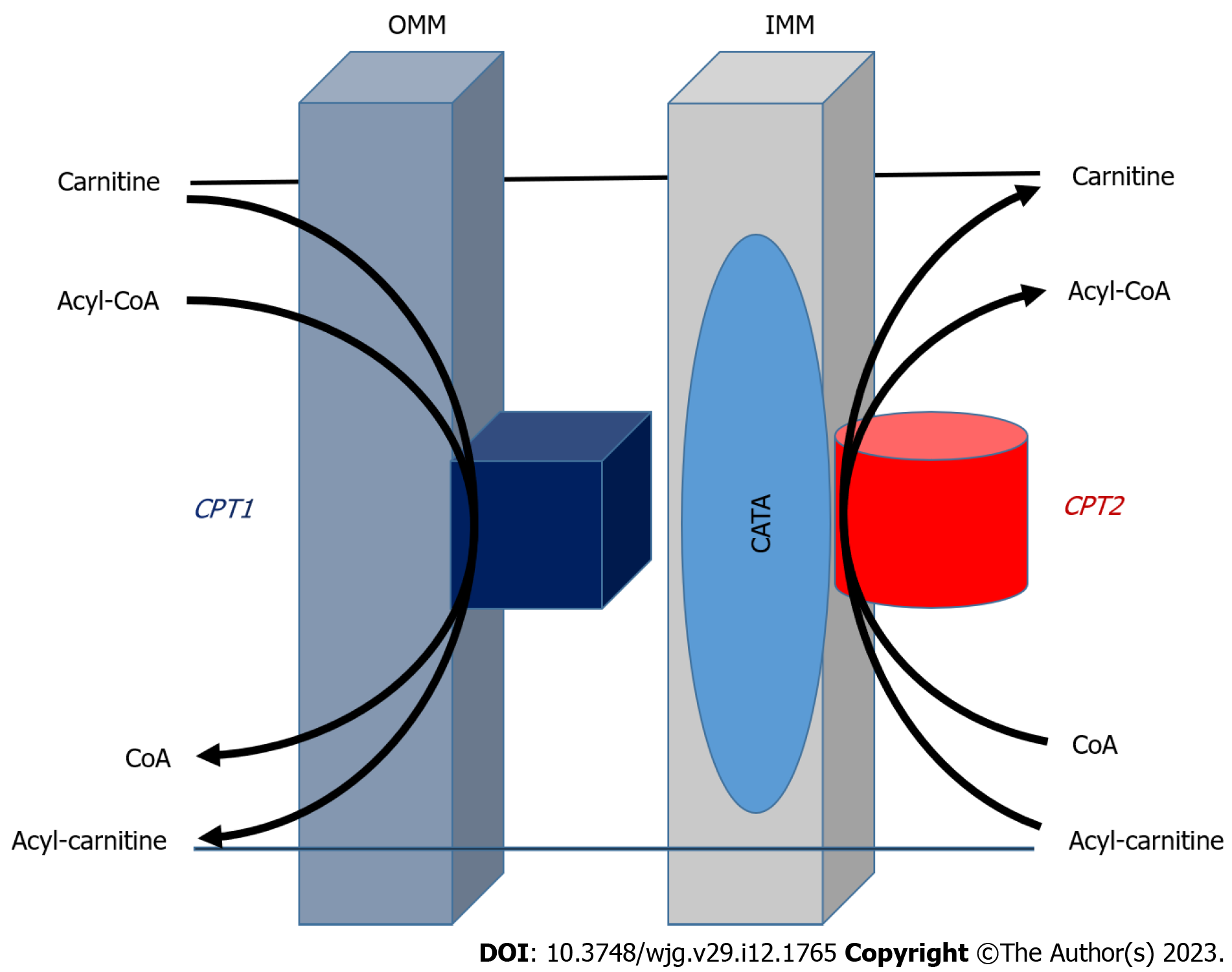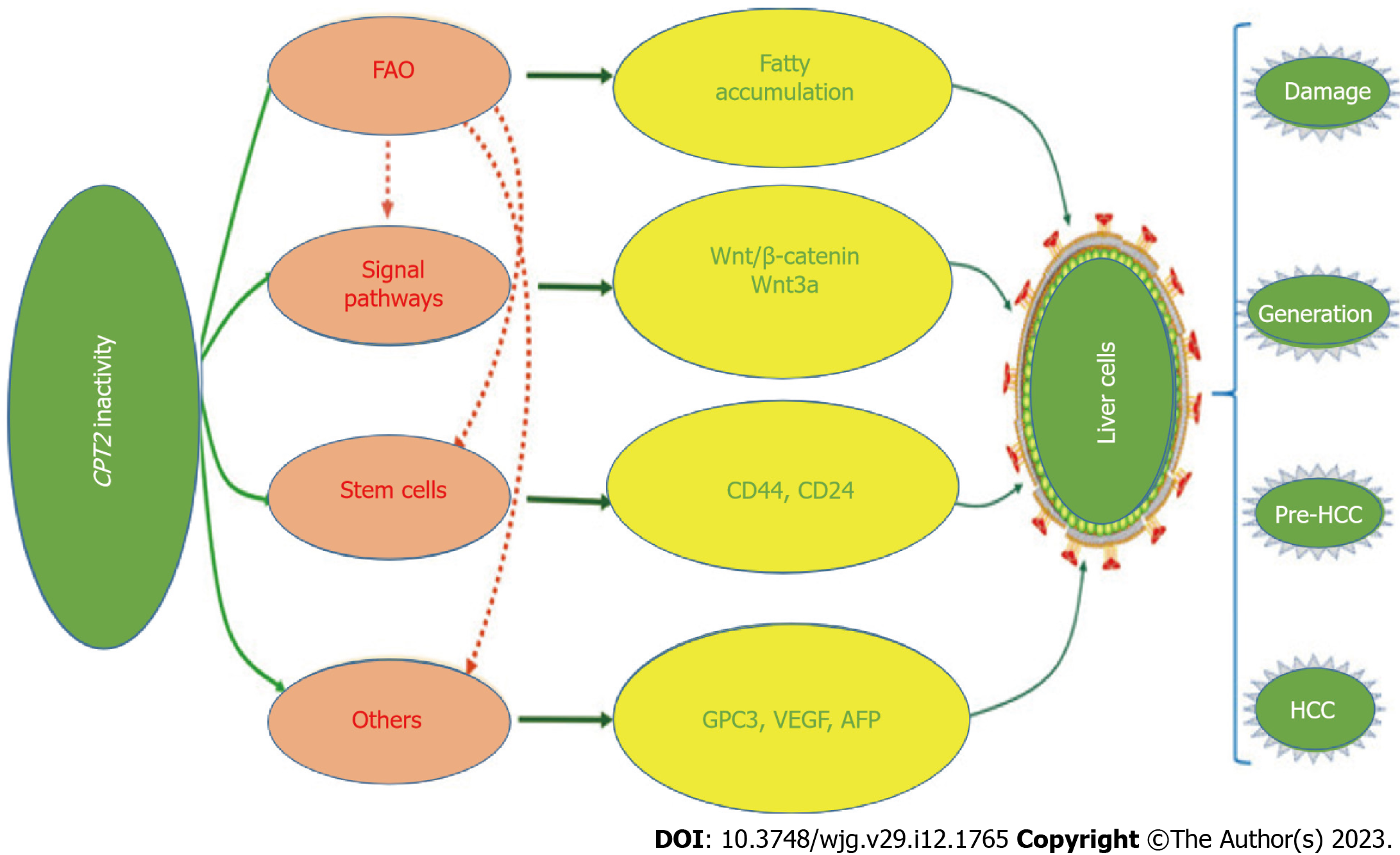Copyright
©The Author(s) 2023.
World J Gastroenterol. Mar 28, 2023; 29(12): 1765-1778
Published online Mar 28, 2023. doi: 10.3748/wjg.v29.i12.1765
Published online Mar 28, 2023. doi: 10.3748/wjg.v29.i12.1765
Figure 1 Transport system of fatty acid oxidation in outer mitochondrial membrane and inner mitochondrial membrane[11,65].
Fatty acid β-oxidation is catalyzed by enzymes located in outer and inner mitochondrial membrane to form acyl-coenzyme A (CoA) in the participation with ATP and CoA. Carnitine palmitoyltransferase (CPT)-I promotes the conversion of acyl-CoA to acyl-carnitine that is transported to mitochondrial interior with the help of translocase on the intima of mitochondria. Under the catalysis of CPT-II, acylcarnitine releases carnitine, and then converted to acyl-CoA to enter β-oxidation. The CPT system with carnitine acyl-carnitine translocase play a vital part in the transport system for esterification of fatty acids through the mitochondrial membrane and CPT-II as a key rate-limiting enzyme for fatty acid β-oxidation. OMM: Outer mitochondrial membrane; IMM: Inner mitochondrial membrane; CACT: Carnitine acyl-carnitine translocase; CPT: Carnitine palmitoyltransferase; CoA: Coenzyme A.
Figure 2 Carnitine palmitoyltransferase-II inactivity in hepatocarcinogenesis.
Disorder of lipid metabolism may be related to the pathogenesis of nonalcoholic fatty liver disease with malignant transformation of hepatocytes. AFP: Alpha-fetoprotein; CoA: Coenzyme A; CPT2: Carnitine palmitoyl transferase 2; FAO: Fatty acid oxidation; HCC: Hepatocellular carcinoma; VEGF: Vascular endothelial-derived growth factor.
- Citation: Yao M, Zhou P, Qin YY, Wang L, Yao DF. Mitochondrial carnitine palmitoyltransferase-II dysfunction: A possible novel mechanism for nonalcoholic fatty liver disease in hepatocarcinogenesis. World J Gastroenterol 2023; 29(12): 1765-1778
- URL: https://www.wjgnet.com/1007-9327/full/v29/i12/1765.htm
- DOI: https://dx.doi.org/10.3748/wjg.v29.i12.1765










